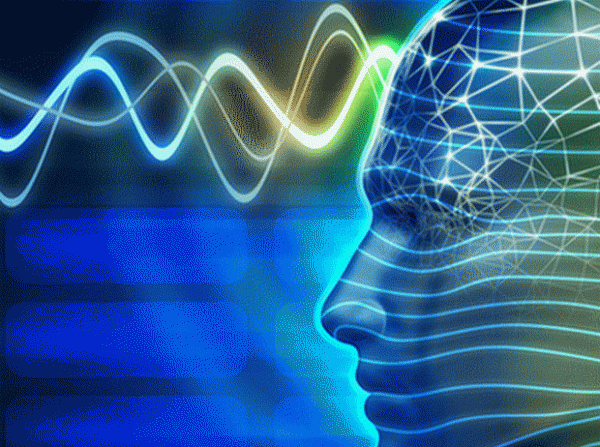
Whether you are a doctor or a health care professional; whether you are sick, and/or you think you are becoming intolerant to electromagnetic fields (EMF) or chemicals, this ehs-mcs website is intended for you.
It was created in the spirit of the Hippocratic oath and therefore is in strict compliance with Medical Ethics. It is mainly devoted to sick persons who need care and treatment according to the best medical and scientific knowledge, in addition to a most accessible social framework.
Note for people intolerant to electromagnetic fields.
To protect your health, for reading you are advised to print the website content.
This website is the exclusive property of the Association for Research and Treatment of Cancer (ARTAC). Its content in the form of printed documents cannot be shared without ARTAC permission.
|
General background
The content of this website is the result of several years of clinico-biologic research efforts to diagnose and treat patients with self-reported electromagnetic hyper-sensitivity (EHS) and/or hyper-sensitivity to multiple chemical products i.e. " Multiple chemical Sensitivity" (MCS). Research based on a series of more than 800 self-reported EHS and/or MCS patients was performed by the ARTAC research team coordinated by Dr Dominique Belpomme: MD, MCS, full professor in medical oncology at the Paris University. These patient investigations and follow-ups began in 2008 at the Georges Pompidou European Hospital, and from September 2009 to today at the Alleray Labrouste private hospital, Paris 75015.
The research has been carried out at a French national level under the control of the ARTAC research coordination team, and since 2011 at an international level, under the control of the Environment Research Institute (ECERI) which ARTAC founded in Brussels (Belgium).
The data reported on this web site are from the international scientific literature and/or from the ARTAC and/or ECERI’s experimental and clinical data, all resulting from a rigorous scientific research process and in accordance with the principles of "evidence -based medicine." Therefore these data cannot be criticized other than in the framework of the falsifiability principle, as proposed by the German scientific philosopher Karl Popper and defended in France by a friend of Pr Belpomme, Jacques Monod, winner of the 1965 Medicine Nobel Prize.
ARTAC and ECERI are non-profit private research organizations, independent of conflicting interests, primarily funded by donations and legacies from patients or their families, as well as sponsors who understood potential risks of excessive exposure to EMF and the inadequate market regulation of chemicals whose toxic effects are insufficiently assessed. So ARTAC and ECERI scientists emphasize the extreme gravity of the public health situation generated by environmental pollution, reflected in the increasing incidence of many chronic diseases and some entirely new pathological disorders. Public health policies in the different countries around the world, particularly in the European Community, continue to minimize or deny the deleterious health effects of non-ionizing radiation at various frequencies. The risks of chemicals still marketed without adequate toxicological control, despite the basic reversal of burden of proof (“no toxicity data, no market”) in the new European regulation REACH (Registration, Evaluation, Authorization of Chemicals). The Paris Appeal, initiated in 2004 at UNESCO (Paris) by Professor Belpomme, contributed to REACH’s implementation, and ARTAC and ECERI continue to promote its goals at the scientific level.

Towards environmental medicine
Why has the EMF / chemical public health situation become so critical ?
An key answer is that people claiming to be suffering from EHS and/or MCS represent only the tip of an iceberg. We should indeed distinguish the three following clinic-biologic entities.
Pathologic intolerance is defined as the occurrence of clinical symptoms and biological dysfunctions in any subject exposed to EMFs and/or chemicals without considering specifically susceptibility or hypersensitivity to these agents. Any patient, potentially many, might display pathologic intolerance;
Susceptibility is a clinico-biologic condition related constitutionally to a particular genetic profile (or to epigenetic acquired intracellular modifications as a consequence of environmental exposures). Due to the continuing expansion of EMF and/or chemical exposures, such genetic/epigenetic susceptibility may affect an increasing number of people.
Hypersensitivity is a specific condition characterized by susceptible patients becoming clinically and biologically intolerant to weaker intensities of EMFs and/ or low concentrations of chemicals than they may have originally been exposed to. Less numerous than intolerant people, these EHS and MCS patients may even so represent the tip of the iceberg. We must consider the hypersensitivity syndrome as an indicator of a much larger public health problem: thelarge numbers of people who have not necessarily become hypersensitive who may in fact be intolerant to these agents; and that their ubiquitous prolonged exposures may generate a number of chronic organic disorders or diseases; which unfortunately medicine still considers idiopathic, i.e. without any recognized cause. It is possible that such widespread intolerance phenomena, especially when associated with progressive organic damage, may account for much of the apparent increased incidence (few baseline measures exist) of widesprad pathological conditions, such as migraine, heart rhythm disorders, chemical-induced asthma and other obstructive bronchial diseases, skin diseases, chronic rheumatisms and many other autoimmune diseases, degenerative neuropathies (including Alzheimer's, Parkinson's, multiple sclerosis and even amyotrophic lateral sclerosis), autism in children, and even several types of cancers and leukemias. The incidence of non-infectious chronic diseases has been growing strongly for decades (when a baseline can be established), while modern medicine still considers them to be largely idiopathic.
Taking into account worldwide scientific research and the results of our own research highlighting the causal role of the environment in the emergence of some of these pathological disorders or diseases, we believe that the diagnostic and therapeutic management of such patients must occur within the framework of a new extremely multi-disciplinary form of medical practice designated “environmental medicine”. ARTAC has implemented environmental medicine in France and now, thanks to ECERI in Europe, with the objective to diagnose and treat patients using the best evidence-based techniques, supplying in France highly specialized medical consultations.

Several scientific papers arising from ARTAC’s research have already been published. Others are in press and more will be submitted to top journals, pending financial support which neither ARTAC nor ECERI currently have sufficiently. Nevertheless, our research and dissemination efforts continue relentlessly, as ARTAC has extensive clinical and biological experience in its field. ARTAC’s series of clinically examined and biologically investigated and treated patients with EHS and/or MCS is probably one of the largest worldwide. It is noteworthy that ARTAC discovered new biological tests and innovative treatments of great use to highly integrated practice of environmental medicine.
Another key asset for ARTAC and ECERI’s research success in the field of EHS and MCS diagnosis and treatment is their allegiance to objectivity in science, independent of any political pressures or administrative ideologies and private interests (profit over knowledge) of electromagnetic and chemical industries. The recognized scientific expertise and quality of research work of ARTAC and ECERI in the field of EHS and MCS derive from their independence when performing scientific research and reaching new scientific knowledge; from their internationally recognized competence in a field as complex as cancer; and from their public expressions concerning the social implications of scientific results. ARTAC and ECERI’s researchers are indeed not systematically opposed to industrial technological innovations, when these are useful and honestly beneficial to populations. But ARTAC’s priority is the care of patients in the best medico-social conditions. Therefore health policy is paramount, and ARTAC and ECERI promote exposure restrictions, rather than the current economic excess and environmental spill-over known to be driven mainly by private profit-seeking.
Un autre atout primordial concernant les recherches de l'ARTAC et de l’ECERI est leur totale indépendance scientifique vis-à-vis des pouvoirs administratifs et politiques quels qu’ils soient et des lobbies en provenance des opérateurs et industriels impliqués dans les technologies sans fils ou la chimie. Ce qui assure la véracité scientifique des travaux de l’ARTAC et/ou de l’ECERI est justement leur indépendance dans le choix des thématiques de recherche envisagées, leur compétence internationalement reconnue dans un domaine aussi complexe qu’est le cancer et leur liberté d'expression au plan national et international vis-à-vis du grand public, une fois les travaux scientifiques réalisés et éventuellement publiés.
Il ne s'agit pas ici de s'opposer systématiquement aux innovations technologiques de l'industrie lorsque celles-ci sont utiles et bénéfiques pour les populations, mais d’abord et avant tout au plan médical, de prendre en charges les malades victimes de ces affections ou maladies, dans des conditions médico-sociales les plus satisfaisantes possibles, et au plan de la santé publique d'instituer et de promouvoir auprès des décideurs politiques des limites sanitaires raisonnables, face aux excès économiques actuels dont on sait qu’ils sont guidés par une logique principalement, si ce n’est exclusivement, financière.
This website will be uploaded and updated with scientific and medical (diagnostic and therapeutic) research. It includes the following topics:
Diagnosis
6) Clinical and biological description of the multiple chemical sensitivity syndrome (MCS),
7) Diagnostic criteria of MCS,
8) Differential diagnosis,
9) Clinical forms of EMF and/or chemical intolerance,
11) Familial forms of EHS and MCS,
12) A particular clinical form of MCS: cutaneous intolerance to synthetic fibers.
Protection
1) Understanding of what are EMFs and their health effects
2) How can we avoid EMF intolerance,
3) How can we protect ourselves when suffering from EHS ?,
4) Understanding chemical pollution and practical advice to protect ourselves when suffering MCS,
5) Physical barriers and/or societal prejudices: What can we do ?
Treatments
1) What treatments are possible for patients with EHS and/or MCS ? ARTAC and ECERI therapeutic clinical trials,
3) Removal of mercury amalgams: how and whom can you consult ?
4) Poisoning by heavy metals : what can be done ?
5) What are food allergies and food intolerances ? What can be done in case of allergy or food intolerance ?
Information
1) Patient assistance. How can you organize to act effectively?
2) In case of serious health and social problems, who can be contacted?
3) Some useful contacts for protecting oneself
4) Where do we stand regarding the recognition of EHS and MCS by governmental bodies as WHO and the different Member States of the European Union?
Scientific research
1) Learn more about ARTAC and ECERI,
2) ARTAC and ECERI’s current scientific studies,
3) Help fund research: why and how can you help ARTAC or ECERI to improve EHS and MCS diagnosis and treatment,
References




No comments:
Post a Comment